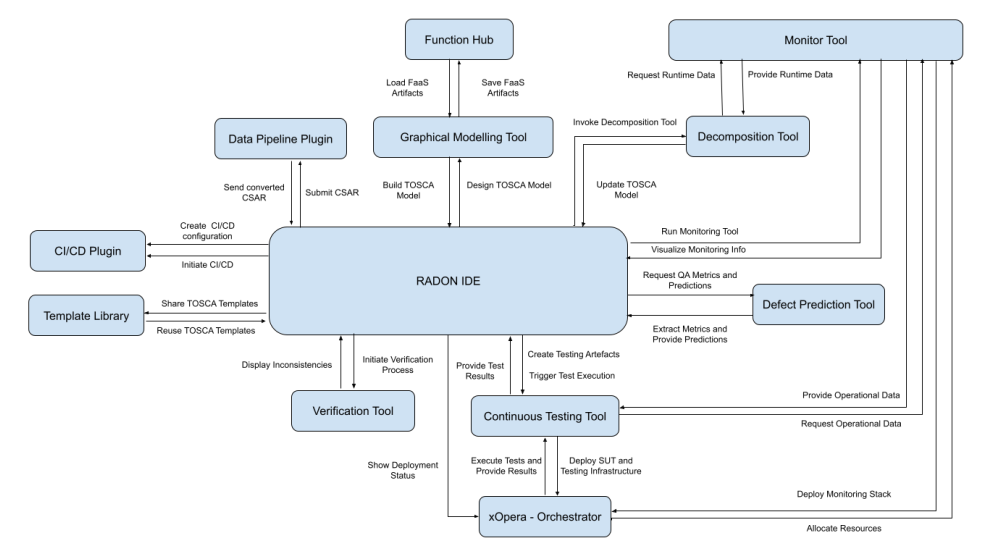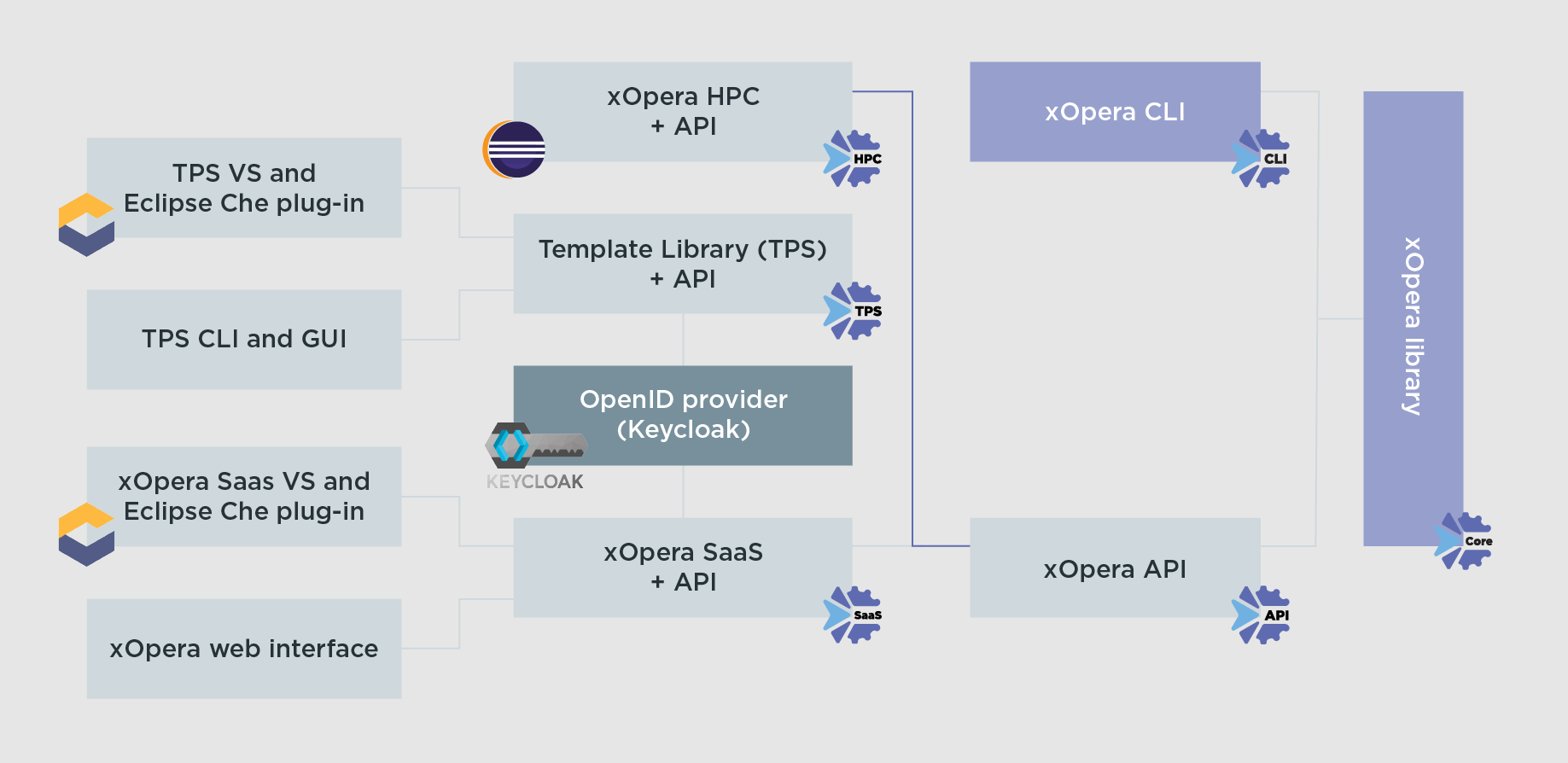Over the past years, serverless computing has become extremely popular because it is cheap, easy to manage, and solves technical problems effectively. Developers are able to build applications faster because they no longer have to start writing code from scratch. Serverless computing technologies such as Function as a Service (FaaS) enables them to virtualize the internal logic of an application, which simplifies the management of cloud-native services and enables cost savings through billing and scaling at the individual function level.
By using such technologies, development teams can focus on other, more meaningful activities, increasing their productivity and the ability to bring products to market faster. This way organizations can better optimize their resources. Believing that serverless computing is revolutionizing cloud technology, together with 7 partners in the RADON project we rolled up our sleeves and started working on an advanced framework for defining, developing and operating DevOps based on serverless FaaS computing technology. The goal was to enable a broad spectrum of software companies to leverage an integrated software development methodology and open source toolchain that enables a high degree of reuse and automation of functions, services, and associated data pipelines. How did it go? Let’s see.
The RADON framework
RADON has been a very interesting journey with an excellent technical outcome for DevOps enthusiasts in academia and industry. The RADON framework solution consists of more than ten tools covering all important stages of IaC (Infrastructure as Code) application development and deployment lifecycle. The foundation is the IDE platform, based on Eclipse Che, with pluggable solutions for graphical service blueprint development, applying verification and code smell checks over the IaC, and deploying the solution with our xOpera SaaS orchestration Engine.
The tools are integrated in a single IDE environment and can be divided into groups covering IaC application design, IaC testing, deployment, monitoring and maintenance. Most of the tools can also be used individually independently of the RADON framework. And what’s even better – by using Eclipse Che plugins, users can customize their RADON framework flavor to their needs or integrate a part of RADON into their own IDE. If this caught your attention and you want to learn more, this is the place for you.

RADON integrated tools and related workflows (Source: RADON Booklet).
RADON in action
RADON has achieved outstanding technical results applied in three pilots, (a) covering travel technology and personalized touristic scheduling path, (b) ambient assisted living where robots help elderly people and monitor their vitals, and (c) managed DevOps, where users require pre-prepared building blocks (business processes, functions), that can be integrated into the orchestration blueprint. All pilots were able to transform their legacy monolith application into service oriented and FaaS powered apps, reducing the cost by paying only the resources that were used. Using the RADON approach helped them to achieve more responsive, safe, robust and maintainable solutions. Consequently, even future development and deployment will be easier and faster. In terms of methodology perspective, RADON has proposed new programming approaches and helped to define the TOSCA hybrid compute profile, which is a standardized library developed in collaboration with the SODALITE H2020 project.
XLAB’s role
The RADON also had an important impact on XLAB’s work as it contributed and steered the implementation of the xOpera project, which has evolved from a simple idea into a set of life-cycle management tools, ready to deploy your TOSCA content. The success of xOpera lies in its wide adoption in H2020 projects (RADON, SODALITE, PIACERE, FISHY) that integrate and use the open source or enterprise parts of xOpera. At the heart of the project is opera orchestrator, a lightweight TOSCA orchestration engine that is available as an application package on PypI – in the form of opera CLI – or in the form of xOpera API – if you prefer to integrate the engine into your project. The choice is yours.

xOpera component architecture (Source: xOpera online documentation)
The stakeholder requirements of the RADON project have driven the development of tools based on the orchestrator core library and API. A remarkable achievement is the enterprise grade, standalone and vendor agnostic orchestrator as a service, called xOpera SaaS which enables comprehensive management of deployment projects, sharing projects and secrets between users, and application lifecycle management through an intuitive graphical interface. In addition to the interface, users can exploit the API or use the plugin for Visual Studio Code or Eclipse Che, which enables an instant integration with their preferred IDE.
However, the IaC blueprints and the IaC modules used to create them must be stored somewhere. This part is solved by the Template Library Publishing Service (TPS) which allows publishing different versions of IaC elements. The content is organized into services and modules and can be publicly available or privately shared. Developers can access TPS by CLI or API to automate things, while searching can also be done via a graphical web interface. Users who prefer IDE environments, can integrate TPS using plugin for Visual Studio Code or Eclipse Che.
These advancements initiated in the RADON’s projects tasks shaped the usefulness of xOpera and provide the tests from first real users. The result was interesting also for the OASIS TOSCA technical committee, who invited the xOpera creators to present the project on TOSCA Implementation Stories.
What’s next
The final act of the three-and-a-half-year project took place at the final review on September 20, 2021, where the RADON team joined forces one last time to impress the reviewers. The project has officially ended, but don’t worry, we are left with a great amount of code, ideas and most importantly knowledge that we will share in other research projects and in transfer to our own IT management solutions and services. One big next step is already in front of us. The xOpera creators have rolled their sleeves and proposed to share their expertise with the team developing the new European Gaia-X orchestrator. The XLAB was awarded for initiating this new journey, which is a great honor for us. So, the future certainly looks promising, and we look forward to it 😉.
So long RADON and thanks for all the fish.








